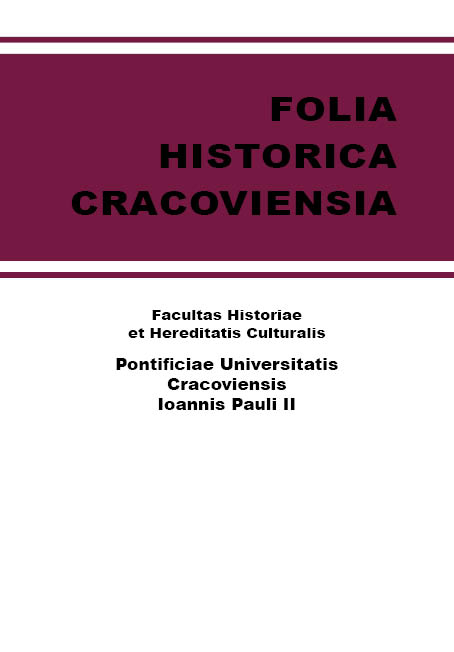Dawni mieszkańcy Garbar w ujęciu biokulturowym
Past inhabitants of Garbary – a biocultural perspective
Author(s): Agata Przesmycka, Krzysztof Szostek, Elżbieta Niedźwiecka, Sławomir Dryja, Aleksandra Lempart, Elżbieta HaduchSubject(s): History, Anthropology, Social Sciences, Archaeology, Comparative history, Middle Ages, Cultural Anthropology / Ethnology, Culture and social structure , 15th Century, 16th Century, 17th Century, 18th Century, 19th Century
Published by: Wydawnictwo Naukowe Uniwersytetu Papieskiego Jana Pawła II w Krakowie
Keywords: Garbary; stature; Index of Sexual Dimorphism; osteology
Summary/Abstract: The present work analyses the bone material unearthed at the graveyard of St Peter the Little’s Church in Garbary. The study is based on research from the years 1978 and 2012. A total of 111 skeletons were analysed, all of them of medium condition, dating back to the modern period. The material’s diversity level was verified by biological distance assessment. Ward’s method was used for selected measurement features of the neurocranium and the facial skeleton. Sex and age were established simultaneously by means of methods commonly applied in anthropology. The assessment was based on the morphology of the skull and pelvic bones as well as the deciduous and permanent teeth eruption sequence. Cranial measurements and indices were subjected to analysis. Osteometric data provided the basis for an analysis of long bone symmetry, limb length and proportions and bone massiveness indices. A multi-planar reconstruction of individuals’ stature was performed by means of regression formulas developed by various authors. Sexual dimorphism index served indirectly as a measurement of the living conditions of individuals in the population, whereas an analysis of muscular and skeletal stress markers on bones allowed us to evaluate build types. Calculated life expectancy table parameters were used to recreate e.g. individuals’ lifespans and life expectancy structure (by age at death) characteristic of historical populations of Krakow. /W pracy dokonano analizy materiału kostnego wyeksplorowanego z obszaru cmentarza przy kościele św. Piotra Małego na Garbarach. Badania prowadzone były w latach 1978 i 2012. Analizie poddano 111 szkieletów, o średnim stanie zachowania, datowanych na okres nowożytny. Sprawdzono stopień różnorodności materiału z wykorzystaniem oceny odległości biologicznej. Zastosowano metodę Warda dla wybranych cech pomiarowych mózgoczaszki i twarzoczaszki. Płeć i wiek zostały ocenione kompleksowo z zastosowaniem metod powszechnie przyjętych w antropologii. Wykorzystano ku temu morfologię czaszki i kości miednicznych, jak również sekwencję wyrzynania się zębów mlecznych i stałych. Analizie poddano pomiary i wskaźniki czaszek. W oparciu o pomiary osteometryczne wykonano analizę symetryczności kości długich, długości i proporcji kończyn oraz wskaźników masywności kości. Wielopłaszczyznową rekonstrukcję wysokości ciała osobników przeprowadzono przy użyciu równań regresji różnych autorów. Wskaźnik dymorfizmu płciowego pośrednio posłużył jako miara warunków życia osobników w populacji, natomiast analiza wyznaczników stresu mięśniowo-szkieletowego na kościach pozwoliła na ocenę typu budowy ciała. Obliczone parametry tablicy wymieralności posłużyły odtworzeniu m.in. długości życia osobników i struktury wymieralności według wieku zmarłych zachodzącej w jednej z dawnych populacji krakowskich.
Journal: Folia Historica Cracoviensia
- Issue Year: 21/2015
- Issue No: 1
- Page Range: 209-250
- Page Count: 42
- Language: English

